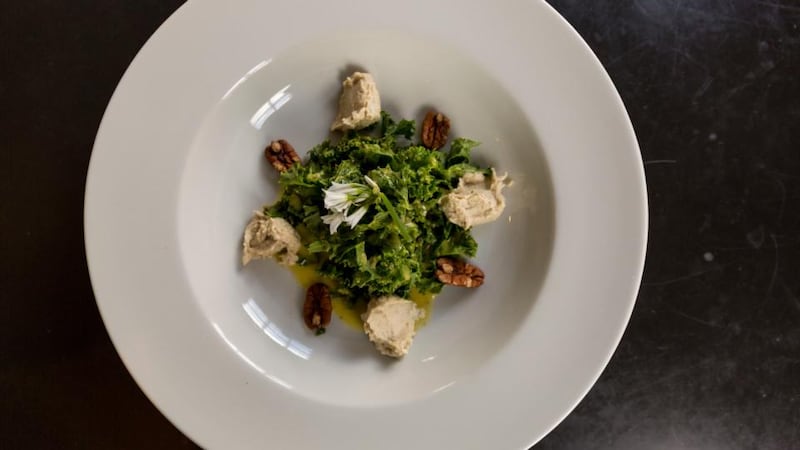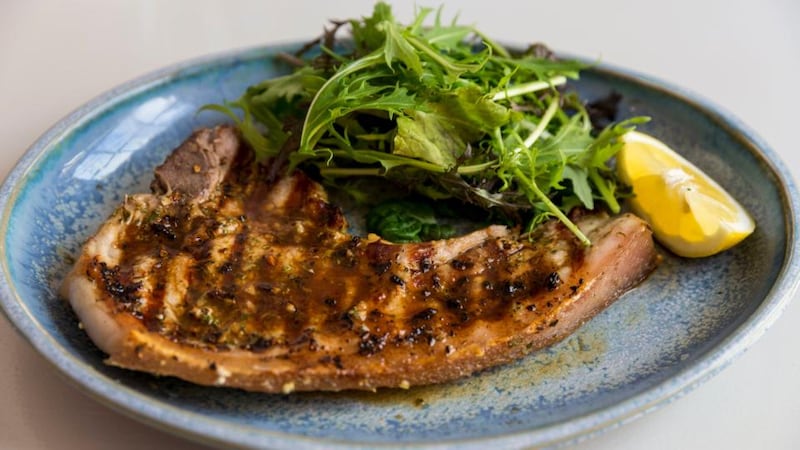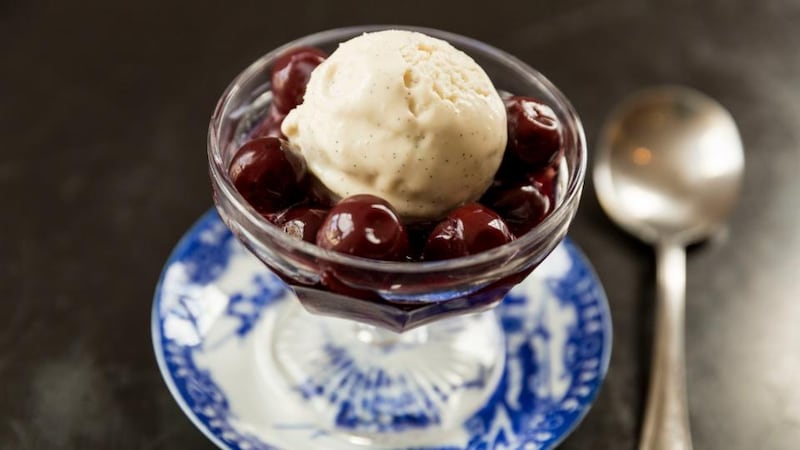Marination is the process of soaking foods in a seasoned, often acidic, liquid before cooking, while macerating is allowing food to soften by soaking in a liquid. They can both have effortlessly brilliant effects on the flavour of your food.
I use both of these techniques frequently in my cooking. Initially, they appealed to my lazy side. I can get impressive results without doing much, and I avoid being overwhelmed with last-minute work as the meals require advanced planning.
Contrarily, while they appeal to one’s inner sloth, they also create a sense of discipline and order. These methods require focus and planning but usually result in a very laid back way of cooking.
Meat, fish and vegetables that are allowed to sit with herbs, spices and seasoning take on a quality and depth of flavour that is only achievable over time and cannot be replicated last minute. The discipline is unavoidable if you want the incredible flavour.
I am drawn to marinating as a way of having structure and focus surrounding flavoursome food while still living our busy lives.
Marinated kale salad, cashew cheese, spiced pecans with a lemon and honey dressing

Serves 4
Over the past few years plant-based cooking has become very popular and as a family, we find it very exciting. Discovering cashew cheese was one of our highlights and I couldn’t wait to put it on our dinner menu. This recipe was the result. Don’t be put off by the preparation required for this recipe – you will find it very rewarding and simple to dish up. You can always double the recipe for the cheese, dressing and nuts and have them for a later date, which is always a gift to the cook.
Cashew cheese
If you don’t have a powerful blender, soak the cashews in water for a couple of hours. Don’t leave them too long in the water as they will start to go grey. I like to leave the mixture to ferment until it has a strong cheesy taste, which sometimes can take up to five days. The probiotic will help the fermentation to get undeway.
Ingredients
200g cashews
150ml-200ml water
1 probiotic capsule
Flavourings:
Olive oil
Lemon juice
2 cloves of garlic, crushed
1 shallot or chopped chives
Salt and pepper, to taste
1. Put the cashews and 150ml of water into a blender and process for 30 seconds, or until you have a smooth paste. You might need to add more water, depending on the dryness of the nuts, so do this by eye. Begin slowly at first, then increase the speed to ensure you have a smooth and light consistency.
2. Break the probiotic capsule in half and add the contents to the cashew mix and blend on low for 20 seconds.
3. Put the mixture in a glass bowl (not plastic) and cover it well. Set the bowl in a warm place for 48 hours to culture, sometimes longer, depending on the temperature.
4. Add flavours to your liking, using the ingredients suggested above, or try something new.
Lemon and honey dressing
Zest and juice of 2 lemons
Olive oil – double the quantity of lemon juice
2 tbsp honey
Salt and pepper, to taste
1. Add the zest, juice, olive oil and honey to a liquidiser, along with a little salt and pepper, and whizz for a minute. Taste and add more juice and or honey if needed. If you feel it’s not the juice or honey that is needed, add a good pinch of salt and whiz it again. Adding salt will bring the lemon and honey flavour through the oil. You are aiming for a sweet-sour taste.
Marinade for kale
300g kale
Juice of a large lemon
1. Remove the stalks from the kale and chop the leaves into shreds. Place the kale in non plastic bowl and pour the juice over it.
2. Use your hands to rub the juice well into the kale.
3. Allow to stand for 30 minutes (no longer, as it will start to discolour), mixing every now and again
Spiced pecans
16 pecans
Salt, to taste
Chilli powder, a pinch
Olive oil
1 tbsp maple syrup
1. Put the pecans in a mixing bowl and add just enough oil to evenly coat them, making sure you have no excess. Add salt and chilli to taste.
2. Heat a pan and lightly toast the nuts until the aroma starts to fill the kitchen, making sure not to let them go from brown to black.
3. Remove the pan from the heat and add the maple syrup and mix well. Allow the heat of the pan to continue cooking the nuts while you mix them.
4. Once they are cold, store the nuts in a sealed jar.
Plating up:
Take a large serving plate and pile the marinated kale in the centre. Spoon the cashew cheese around the kale. Pour the dressing over the kale and drizzle some over the cheese. Scatter the spiced nuts over the whole dish and serve at once.
Seared sirloin salad with barley, grapes and sumac

Serves 4
This recipe is from the Moro cookbook and I love it for its simplicity and clever use of ingredients. It is great to have uses for barley as it often lies in our cupboards, opened, waiting for its turn to come around again.
The last minute work required on this recipe is limited, making it perfect for a dinner party as it won’t interfere with your socialising too much.
Ingredients
50g pearl barley, cooked in 1 litre of water for 40 minutes, drained and cooled
2 sirloin steaks, about 600g in total
1 big bunch of flat leaf parsley, leaves only
350g white grapes
Salt and pepper
Marinade
1 very small onion, grated
1 tbsp vinegar
1 tsp sumac
1 tsp gound all spice
Pinch of black pepper
Dressing
1 clove of garlic, crushed
1 tbsp vinegar
4 tbsp oil
2 tsp sumac
A pinch of all spice
A pinch of coriander
1. For the marinade – mix all of the ingredients together, rub over the steaks and leave for a couple of hours
2. For the dressing – blend all of the ingredients together and season with salt and pepper.
3. Mix the dressing with the cold barley, parsley leaves and the grapes and place in a serving bowl
4. Heat a griddle or regular pan until it is very hot. Sear the steaks very quickly on both sides. This will take two minutes on the first side and just one on the other for rare, which works best for a salad.
5. Let the meat rest for a few minutes, then slice the steaks into thin slices and place on top of the salad.
Portuguese pork chops

Serves 4
My first holiday on my own was to Portugal in the late 1980s. I spent two weeks travelling between Lisbon and Oporto by bus. I stayed in pousadas mostly, where they served local dishes. I fell in love with the broths and cabbage dishes and found myself having them most evenings after a day's walking.
On one of my last nights, as I headed back down the coast to Lisbon, I ended up staying with a family who had put a “room to let” notice on their window. I spent two nights with them and one of the evening meals was a simple pork chop with boiled potatoes from their garden.
In the morning, the pork was oiled and coated in chopped garlic and allowed to marinade for the day. They took lemons from outside the back door and used the juice to make a sauce. As I was eating this simple dish, I was struck by how delicious it was, and with such little effort.
Nigel Slater has a similar dish where he uses rosemary or thyme, which I often use when I have access to these delicious hard herbs.
Ingredients
4 big fat cloves of garlic
Olive oil
4 pork chops, on the bone, with the skin left on if possible.
Salt
Juice of 2 lemons
1. Place the pork chops on a tray and oil them well. Crush the cloves of garlic through a press or chop it very fine and rub it well into the oiled pork. Sprinkle well with salt. Allow to marinade for at least an hour and longer if possible.
2. Heat a frying pan that is large enough to take the four chops (or you can do them in two batches), until it starts to smoke, then add the chops one at a time.
3. Keep the heat high and cook the chops for three to four minutes, turning the heat down after a couple of minutes if you feel the meat is burning instead of cooking. Turn the chops over and cook for another couple of minutes at least, until cooked through.
4. Remove the meat to a plate.
5. Pour the lemon into the hot pan and allow it to simmer for a minute to reduce and take up the flavour in the pan. Taste the sauce and if it needs more flavour, add a pinch of salt and let it simmer a little longer. Pour the sauce over the chops. If your pan was too hot when you added the juice and it all disappeared just add a cup of water and let it simmer away for a few minutes.
6. Allow the meat to rest with the juice for a couple of minutes before serving.
Poached cherries with vanilla and ice-cream

Serves 4
Each week, when I put in my orders with my suppliers, I ask my daughters if there is anything they would like. They enjoy asking me for produce that is out of season to test my reaction. Their favourite is asking for cherries and peaches in darkest winter.
Cherries are about to arrive in the shops any day now and instead of eating them all in one go, give this impressive dessert a try.
If you don’t have an ice-cream machine and find making it by hand a hassle, hunt down a good brand in the shops.
Ingredients
600g fresh cherries, with stones in
100g sugar
200ml water
1 vanilla pod, split and seeds removed
Ice-cream:
1 vanilla pod
3 egg yolks
100g sugar
300ml milk
150ml double cream
1. Take a saucepan that is large enough to accommodate the cherries, add the water and sugar and bring slowly to the boil. Add the split vanilla pod and all the seeds.
2. Add the cherries and simmer until they are nice and soft but not bursting. Allow to cool and store until needed.
3. Make the ice-cream by whisking the egg yolks together with the sugar. Bring the milk to the boil with the split vanilla pod and all the seeds then pour it slowly over the top of the egg yolks.
4. Pour this mixture back into the saucepan and cook it over a medium heat, stirring constantly, until it coats the back of a spoon. If this process makes you fearful, cook the custard in a bowl placed over a saucepan of simmering water.
5. Strain the mixture through a sieve, allow it to cool completely, then add the cream and mix well.
6. Churn in an ice-cream machine or freeze, stirring frequently, until needed.
7. To serve, gently reheat the cherries and divide them, along with the cooking liquor, between four plates and place a large ball of the ice-cream in the centre. Serve at once and enjoy the contrast of the warm cherries with the cold ice-cream.










